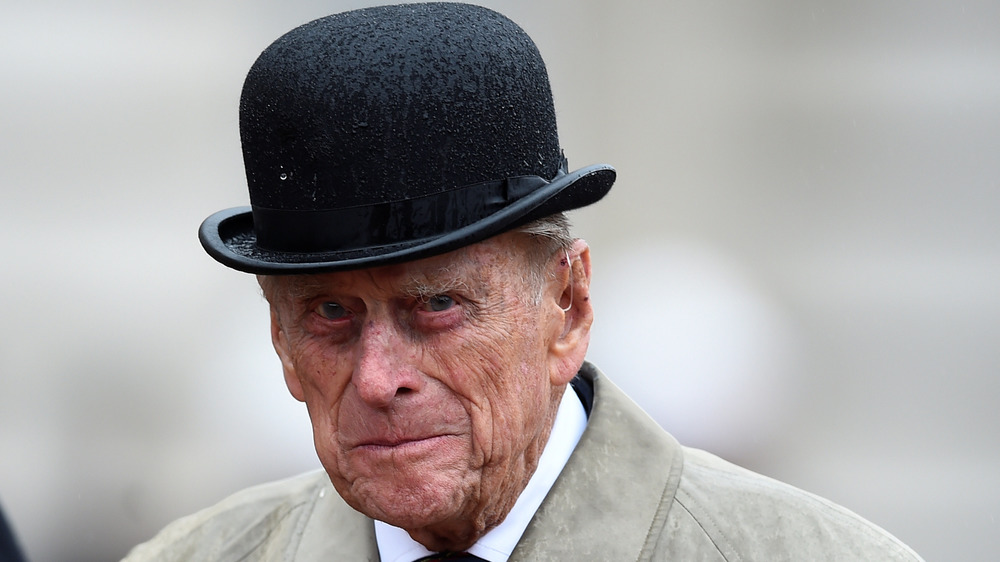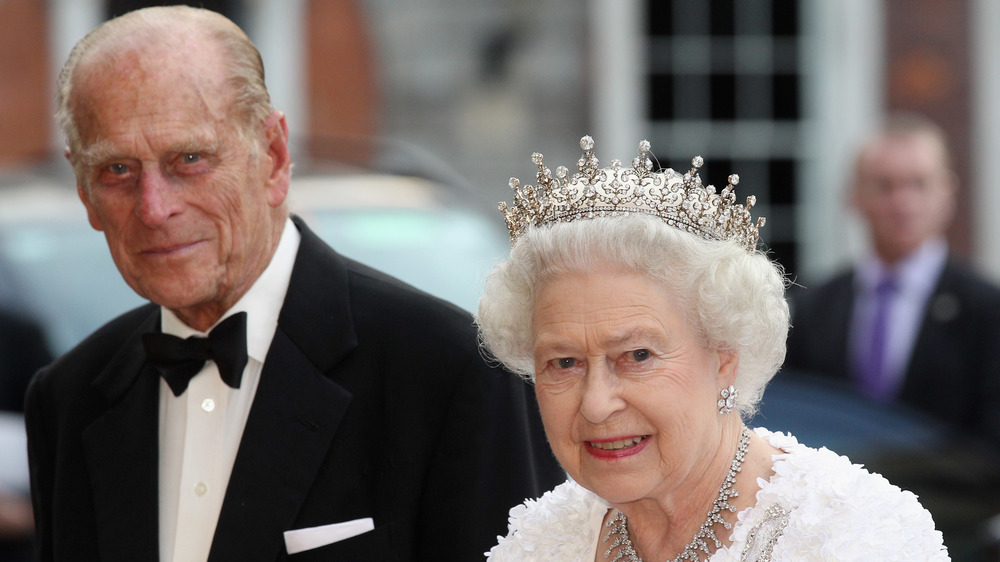The Real Reason Prince Phillip Wanted To Change The Family Name
While the royal marriage has certainly had its ups and downs, as any viewer of The Crown will know, it appears that there was one point of contention that threatened to rip the Windsor family apart. When Prince Phillip married the then-Princess Elizabeth, she chose to keep the old "to obey" clause in her wedding vows. But, when it came to the name of her dynasty, Queen Elizabeth had to fight to keep her name as the head of the house.
When she ascended the throne, Queen Elizabeth had to find peace between her royal duties and her husband. According to Good Housekeeping, the monarch and her husband struggled over the traditional change of name that many couples partake in. The House of Windsor had only been established in 1917, in response to World War One, and Mountbatten served as a stand-in surname for Prince Phillip. He originally came into the world as Prince Phillip of Greece and Denmark, but was forced to renounce his titles when he married Elizabeth and thus took his grandparents name as his surname.
While her mother and then-Prime Minister Winston Churchill strongly advised against taking Phillip's last name, her husband had desires of his own. The former party seemed to be winning the debate, when in 1952 Elizabeth announced her family and her children would all carry the name Windsor. Her husband doesn't appear to have taken it well, Good Housekeeping notes. He reportedly complained that he was "the only man in the country not allowed to give his name to his own children."
The royal couple settled on Mountbatten-Windsor
Today, Prince Harry's son and future children will likely all carry the surname Mountbatten-Windsor. But, in the 1950s, that looked like a long shot. After eight years of tension and the Duke's rumored extra-marital affairs, the Queen announced her decision to formally change the name of her descendants to Mountbatten-Windsor, Good Housekeeping notes. But, some connected to the royal family still use the singular name, Windsor, according to Town and Country.
Mountbatten-Windsor denotes the descendants of Prince Phillip and Queen Elizabeth, while Windsor refers to all family members descended from George V. That way, the royal couple didn't need to change the name of the house and still retained the name Mountbatten for their children. The reason that it's so rare is that those with official titles often don't use a last name. "For the most part, members of the Royal Family who are entitled to the style and dignity of HRH Prince or Princess do not need a surname," according to the royal family's website. "But if at any time any of them do need a surname (such as upon marriage), that surname is Mountbatten-Windsor."
That's why Prince William's children have different last names than their cousin Archie. Prince Harry chose to forgo a title, thus his name is Archie Harrison Mountbatten-Windsor. In the world of titles, there are rules that trip up even the most seasoned of royal experts!

